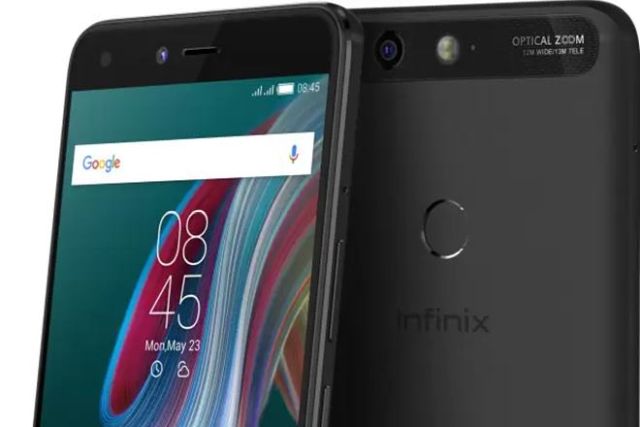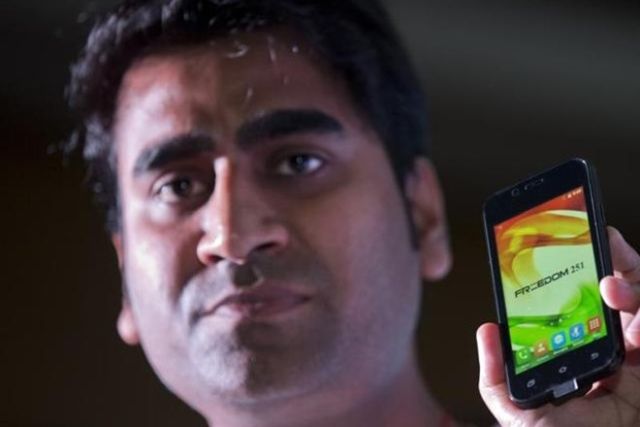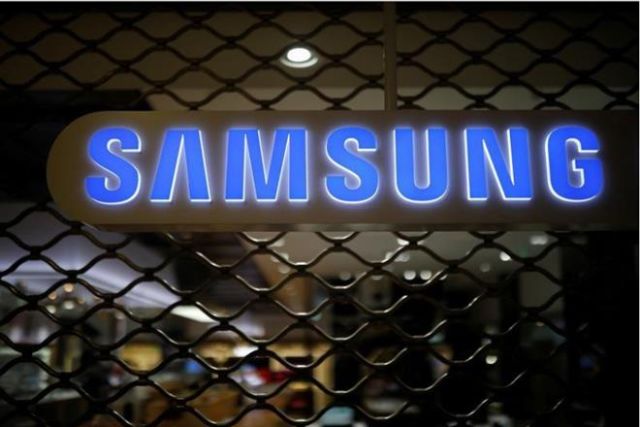
by Editor | May 25, 2021 | Branding, Business, Large Enterprise, Markets, Technology
 By Faisal Kawoosa,
By Faisal Kawoosa,
The year 2017 is likely to be remembered as the year of transition. And 2018 is going to be the year of experiments for the smartphone industry — marking the start of a second era of handsets for Indian consumers.
Handset players will attempt various strategies as they have different agendas to drive and achieve distinct goals. There can be no similar measures working for all the handset makers; however, there are certain focal points for the industry to zero in on to succeed.
Some of the major recommendations for the industry for the year ahead would be:
Premium presence: There was a time when, to become an impactful brand, a smartphone player had to have a portfolio in the under Rs 10,000 price category to essentially cater to new smartphone users.
As the market grows towards upgrades and replacements, it is essential to have a portfolio in the premium category as well. The success in the premium segment will have a direct bearing on the profitability of the brand as well as its overall market standing. The premium segment is the area that home-grown brands have to focus on.
Bundle up: To counter Jio, the existing players have started joining hands with smartphone makers to offer devices almost at prices in the vicinity of 4G feature phones.
While it gives some respite to weakening smartphone brands as, through operator support, they could ensure some volumes, the quality at the entry level has always been questionable. The operators who are otherwise facing criticism from the ecosystem, including the government, regarding call drops, will have to be careful to ensure that such smartphones don’t add new subscribers to the base who are soon dissatisfied.
Operators, especially the incumbents, must look at the next price-level band. There could be some support from the component ecosystem as well, especially the chipset makers.
Telecom: This needs to be now seen in a wider perspective. The technology that lies inside a smartphone could be used to create several other products that become “smart” and “connected”. To gain substantially, it should be a critical long-term strategy point for the Indian brands. They should, in fact, collaborate to look at this future opportunity. Also, the local brands must explore gaming consoles and other devices that can be explored within the same ecosystem.
Hybrid channels: Offline or online? The answer would be both. Exclusive or multi-brand? A complicated question. We have seen the trend triggered by Xiaomi — and adopted mby Oppo as well: Strong Chinese brands will go for their own exclusive retail stores. Indian brands would, however, prefer the multi-brand strategy as they don’t have the resources to expand retail exclusively.
Another way would be hybrid channels where one can take advantage of online selling while, at the same time, being assured of a physical connect with prospective buyers, especially in the rural and remote urban markets. One such channel worth exploring would be the Common Service Centres (CSCs) across the country. That would be RaaS (Retail-as-a-Service) model for the handset makers.
Purpose-built smartphones: The era of exploring the device is over for a substantial number of users and now the use cases are pretty much defined. From the hardware perspective, the smartphone is more or less commoditised and the “solutioning” around it would matter a lot and bring in premium value. The handset makers need to identify considerable opportunity segments and build a smartphone catering to those. This would put a brake on the trend of loading devices with higher specifications which go unutilised as the user may not need them. The value-add should come from handset makers and experts in the field.
Realistically futuristic: One of the challenges with brands selling smartphones is showcasing the future of technology to keep the market excited. However, while doing so, they end up showcasing technologies that are at least a decade ahead. This could backfire on the brand. The entire R&D effort can be jeopardised, creating an imbalance between resources and effort.
It is high time the industry started identifying the challenges, understanding which of these could be addressed quickly and then focusing experiments on them. There is no single set of solutions cutting across all the brands and replicating the successful strategy of one brand would not work for another. The experiments next year would have to be focused and result-oriented.
(Faisal Kawoosa is the General Manager-Research & Consulting with CyberMedia Research [CMR]. His core areas of research include Telecommunications and ESDM. The views expressed here are personal. He can be contacted at releases@cmrindia.com)
—IANS

by Editor | May 25, 2021 | Branding, Business, Large Enterprise, Markets, Technology
 By Gokul Bhagabati,
By Gokul Bhagabati,
New Delhi : At a time when prices of premium smartphones are soaring sky-high, some smartphone makers are finding ways to pack an ensemble of enviable features including dual camera technology into their mid-range variants as well. But what are most of these mid-range phones missing on?
The style quotient is definitely one. Huawei’s youth-centric sub-brand Honor seems to be keen on filling this gap with the launch of its 7X smartphone – the successor to its quite successful 6X variant.
The 4GB RAM Honor 7X, launched for the Indian market at an event in London this week, won’t cost you a fortune – a maximum of Rs 12,999 or Rs 15,999, depending on the variant you choose from the two on offer — and yet it could well make you want to display the phone in front of friends or foes with a sense of pride.
This is because of the taller-than-wider frame of the device and almost edge-to-edge display that give it a premium look. It looks like the smaller sibling of the premium Honor 8 Pro from the rear.
The metal unibody design and bigger body-to-screen ratio add to the dashing look.
So much for the appearance. Let’s see what works for the phone and what does not.
One big plus is its big screen and a full-HD+ display. The importance of a 5.93-inch screen is not skin deep, as heavy users of smartphones would know.
With 18:9 aspect ratio, which is hardly available on a phone below Rs 15,000, and “Full View” HD+ display, Honor 7X ensures enriching video viewing experience. This is something gamers would also like as they get an edge of a wider view of the plot.
Powered by the 2.36GHz octa-core “Kirin 659” processor, the device runs Android 7.0 Nougat operating system (OS) with the company’s custom EMUI 5.1 running on top.
The pricing differentiator of the two variants is the internal storage. The 32GB variant costs Rs 3,000 less than the 64GB variant. But both variants provide the option of expanding memory up to 256GB via hybrid micro-SD card slots.
A big screen and better display would favour long hours of use. But does the battery of the phone back it up? The 3,340mAh battery does a good job in this regard. With 7X, light to moderate users do not even need to charge the phone every day.
In comparison, Xiaomi’s Mi A1, which is also a 4GB RAM phone with 64GB onboard storage, packs a smaller 3,080mAh battery.
The Honor 7X has also equipped its cameras with fun and useful features. Clicking a selfie with this phone is all the more easier as its 8MP front camera comes with a gesture control which means you simply have to turn your palm to the camera to trigger a countdown to click a selfie.
The dual-lens 16MP + 2MP primary camera captures images in great detail and depth. It allows you to take pictures in wide-aperture mode, portrait mode, and even to click a moving picture, a feature that we first saw in iPhone 6S.
The pictures also snap colours in their vivid glories.
What makes this dual rear camera stand out is its “Phase Detection Auto Focus” (PDAF) technology which offers ultra-fast focus time, making it easier to take pictures in fleeting moments.
The eye-comfort mode filters out blue light to help relieve visual fatigue. This feature makes reading books on the phone a delight.
What does not work for the phone?
Despite the fancy features on its cameras, the photos come out grainy in low-light conditions, especially with the front shooter.
Surprisingly, the device uses the older micro USB 2.0 connector rather than the newer USB Type-C.
And thanks to its size, some may even find it difficult to navigate the phone with one hand.
Conclusion: Overall, we feel that Honor 7X is a hardy phone with dashing disposition and has the potential to give mid-range phones of other Chinese players, such as Xiaomi and Motorola, a stiff competition. It offers a big screen bonanza for affordable smartphone seekers.
(Gokul Bhagabati can be contacted at gokul.b@ians.in)
—IANS

by Editor | May 25, 2021 | Branding, Business, Large Enterprise, Marketing Basics, Markets, Sales, Technology
 By Krishna SinhaChaudhury,
By Krishna SinhaChaudhury,
New Delhi : China-based Transsion Holdings made its debut in India in August with Infinix Note 4 and Hot 4 Pro smartphones that did not make much of a noise in the competitive domestic smartphone market.
Now, the company has launched Infinix Zero 5 that joins the race of dual-camera devices coming from its Chinese counterparts that have flooded the Indian market.
Infinix Zero 5 sports a dual-camera set-up at the rear and has a single sensor for the selfie camera at the front.
Launched at Rs 17,999, Zero 5 with 64GB onboard storage and 6GB RAM essentially competes with the likes of Honor 9i.
Here is how the smartphone fares in everyday usage.
Infinix Zero 5 sports a metal unibody design that is free of any creek and felt top-notch.
The edges are smooth and offer an ergonomic grip while adding to the premium feel even as the phone sports a big design language.
The 5.98-inch Full HD display with 2.5D glass atop it was rich and bright.
The colour reproduction was great and the viewing angles were good. Sunlight legibility of the display was impressive too.
The rear camera placement in the device reminds us of Huawei P9’s camera design language sans the “Leica” lens branding.
A much-talked-about feature of Zero 5 is its dual-primary camera with 12MP wide-angle lens and 13MP telephoto lens that added good “Bokeh” effect to photos with blurred background.
We found the pictures to be satisfactory in proper lighting conditions. Colour reproduction was good; so was the saturation level.
Two antenna bands run through the top and bottom of the phone that give a rich look.
The fingerprint sensor lies below the camera set-up and was quick to unlock the device.
An octa-core MediaTek Helio P25 processor, coupled with 6GB RAM, does its job well in terms of multi-tasking and running several applications simultaneously.
We did not notice any significant stutter while playing games, browsing YouTube and using social media apps.
A hefty 4350mAh battery powers the device that easily lasted over a day for us on moderate usage, with 4G running on one SIM slot.
We especially liked the battery performance of the smartphone which gave us close to five days of stand-by time on a single charge.
The bottom of the device houses a USB Type-C charger port and a single speaker grille that is loud enough.
The company’s custom XOS 3.0 user interface (UI) based on Android 7.0 Nougat operating system (OS) is smooth but do not expect it to be similar to stock Android OS.
What does not work?
The 16MP selfie shooter with f/2.0 aperture and flash is strictly okay. Images taken from the front shooter lacked detail.
Image taken from the primary camera took quite some time to process — there was significant shutter lag. The photos clicked under low-light conditions had noise.
The device’s hefty battery gets support of “XCharge” (which is fast-charging feature) but that is not one of the fastest-charging technologies out there.
Conclusion: The bright, colourful display, premium build, primary camera performance and solid battery life are among the high points of the device and makes for an interesting option in the Rs 15,000-Rs 18,000 segment. It can appeal more to buyers if the company introduces updates (let’s say for camera improvement) to fill in a few caveats.
(Krishna SinhaChaudhury can be contacted at krishna.s@ians.in)
—IANS

by Editor | May 25, 2021 | Business, Corporate, Corporate Buzz, Corporate Governance, Large Enterprise, Markets, News, Technology

Mohit Goel
Noida : Mohit Goel, the maker of the controversial “Freedom 251” smartphone which became the talk of the town last year, resurfaced on Sunday, saying that if he gets support from the government, he can still deliver the handsets by March-April next year.
Police on Sunday arrested two persons after Goel, Managing Director of Noida-based Ringing Bells Pvt Ltd which launched the world’s cheapest smartphone last year, filed an FIR against them for not delivering “Freedom 251” units even after the company paid them in advance.
The accused Vikas Sharma, 35, and Jeetu, 40, both residents of Delhi, who allegedly took nearly Rs 3.5 crore from Ringing Bells for delivering handsets, were sent to Dasna jail, Noida’s Superintendent of Police, City, Arun Kumar Singh told IANS.
Speaking to IANS over phone, Goel said: “I paid the duo nearly Rs 3.5 crore and, in return, they cheated me. They siphoned off the money and did not deliver any phone. In February this year, some distributors filed a case against me and I was jailed for six months. Now with the fresh arrests, people will come to know why I failed to deliver on my promise.”
Goel lamented that the government did not come to his support despite his commitment to ‘Make in India’ and ‘Start-up India’ initiative by providing every single Indian citizen with a smartphone.
“The big players today have adopted my model and are now giving smartphones in as low as Rs 1,300, like Karbonn. The Jio model for paying Rs 1,500 in advance for a smartphone is similar. They have deep pockets so they can afford but why don’t people ask them how they are making smartphones so cheap?” he said.
“My vendors didn’t deliver on time and I failed. Our company’s President Ashok Chadda is still languishing in jail. I need one opportunity to come back clean and provide people handsets by March-April next year,” Goel told IANS, adding that he is not planning anything else at the moment but to focus on his “Freedom 251” dream.
The company in mid-February 2016, had planned to deliver 2.5 million handsets before June 30, the same year. Ringing Bells received mammoth — over 70 million — registrations before its payment gateway crashed.
The world’s cheapest phone made a splash across the globe, with almost every big media house writing about the “miracle device”.
After announcing that it had delivered 5,000 ‘Freedom 251’ smartphones to customers in July last year, Ringing Bells said it would deliver 65,000 more to those who had booked the device in cash on delivery (COD) mode.
But no new numbers were shared afterwards.
Goel was arrested in February this year after an FIR was filed by Ghaziabad-based distributor Ayam Enterprises, alleging that Ringing Bells defrauded it of Rs 16 lakh.
The Allahabad High Court later granted bail to Goel. The court had observed that a compromise was agreed upon between the parties involved in the case.
—IANS

by Editor | May 25, 2021 | Branding, Business, Large Enterprise, Markets, Technology
 London : While Apple led the UK smartphone market with just over 34 per cent market share despite sales declining sequentially, Samsung has become the second largest brand, slightly behind Apple.
London : While Apple led the UK smartphone market with just over 34 per cent market share despite sales declining sequentially, Samsung has become the second largest brand, slightly behind Apple.
According to the latest research from Counterpoint’s Market Pulse service, the UK smartphones sales remained flat annually in the third quarter this year, while the overall handset market (including feature phones) declined by 8 per cent (year on year).
“The Chinese giant Huawei was the third largest brand, with consistent double-digit market share, leveraging a diverse portfolio across all price-tiers, but still some distance behind Samsung and Apple that represent something approaching a virtual duopoly,” said Parv Sharma, Research Associate at Counterpoint Research.
Top five brands account for almost 80 per cent of the smartphone sales in the UK in the third quarter.
“Like we see in the US market, Apple and Samsung together control more than two thirds of the UK smartphone market in sales volumes and more than 80 per cent in sales value,” Sharma added.
The Apple iPhone 7 was the bestselling smartphone and contributed to 15 per cent of the total smartphones sold in Q3.
“Samsung’s Galaxy S8 and S8 Plus were second and third. Samsung also has a strong range across all price bands and it, together with Huawei, provided a strong volume platform that was resilient to attack from most other brands,” said Research Director Peter Richardson.
—IANS





